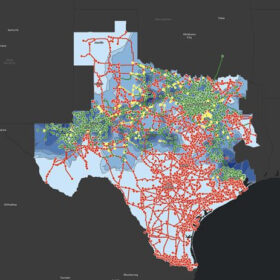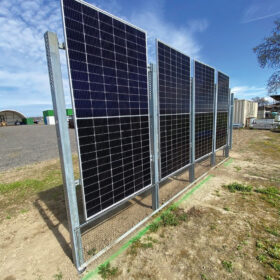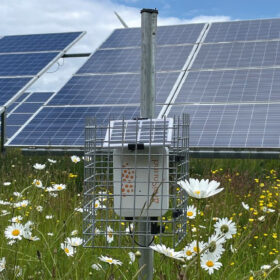PV in the palaces of nature
Above the clouds between the vast walls of the Alps, solar projects are in development. Concerns over insecurity of electricity supply in the winter led the Swiss government to introduce subsidies for Alpine PV projects but while state support bolsters the business case and developers are confident on the technical side, local opposition remains.
The shift factor
For renewable energy developers, finding a site in Texas can feel like searching for a needle in a haystack due to grid constraints, environmental concerns, and other factors. Help is now available, as Sultan Ennab, of Electric Power Engineers (EPE), explains, with reference to the Energy Reliability Council of Texas (ERCOT) grid.
Trackers tread lighter
Solar trackers remain essential for many projects, especially in the United States where the higher cost of modules justifies the added expense. More trackers from more companies can now navigate hilly terrain without earthworks, leading to significant savings. This also helps projects comply with environmental regulations.
Standing up for rooftop solar
Updated energy performance regulations should lead to a significant increase in rooftop solar deployment across the European Union but traditional roof-mounted systems will not work for all buildings. As research into the benefits of vertically oriented PV continues, startups across the continent are getting ready to flip rooftop solar on its head.
The only way is up
Maximizing a solar plant’s total energy generation can result in a supply and demand mismatch in regions with high PV penetration. Adding east- and west-facing vertically oriented panels to solar farms can improve a site’s energy production curve, explains Sunstall’s Philipp Kauls.
All hail weatherproof solar
As extreme weather becomes more frequent, renewable energy installations in many regions are at heightened risk of damage. Nick Price, senior director of global sales engineering for Nextracker, outlines six steps to manage insurance costs while ensuring that solar projects continue to generate energy.
Solar school: Shaping the workforce of the future
How can the solar industry maximize its attractiveness to jobseekers and those mulling a career change? Oana Penu, the director of the EU-funded EIT InnoEnergy Skills Institute, tells pv magazine about the recently launched European Solar Academy and how it plans to reskill and upskill thousands of workers within two years.
Getting renewables sites buzzin’
As renewable energy grows and installations occupy more space, continual reassessment of potential unintended consequences is necessary. Harriet Parker, director of environmental, corporate, and social governance (ESG) and sustainability at renewables investor Low Carbon, discusses how large-scale projects in the United Kingdom can minimize their impact on the landscape.
pv magazine Awards
The balance of system (BOS) category of the pv magazine Awards takes in all the components that support the core system of PV modules, inverters, and batteries. Trends among the first batch of 2024 entries revealed tracker and racking system manufacturers are looking to move onto rougher terrain and into regions with stronger winds. Developers of residential PV solutions also appear to be looking to attract customers who may not have suitable rooftop space for installations. Here we highlight some of the entries received so far. The winners will be announced at the end of 2024 and we will accept entries up until Sept. 27, 2024. Scan the code below or head to pv-magazine.com to share your latest innovations with us.
UP: Solar recycling needs transparency
European industry association PV Cycle estimates a 10 MW solar site will eventually produce 700 tons of waste material. It is becoming increasingly clear that PV modules need end-of-life protocols – for the technology and material processing, and the regulatory environment.








